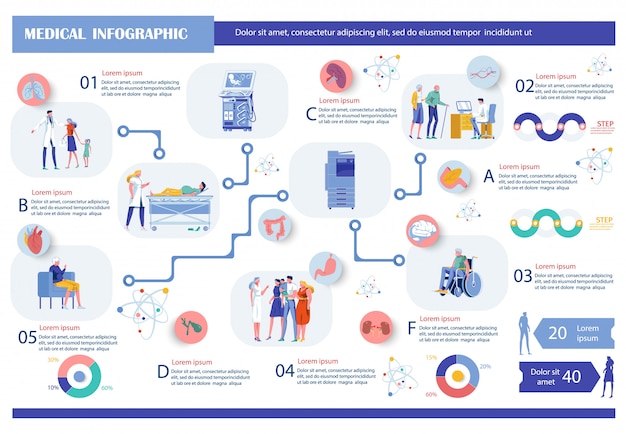The Complete Guide to US Disability Benefits: Eligibility, Application, and Appeals

Disability benefits in the US provide crucial financial assistance to individuals unable to work due to a medical condition; this guide comprehensively explains eligibility criteria, the application process, and available appeals, ensuring you have a clear path to secure these vital benefits.
Navigating the world of disability benefits: eligibility, application, and appeals in the United States can feel overwhelming. This guide breaks down the complexities, offering clear, actionable information to help you understand your rights and access the support you need.
Understanding US Disability Benefits
Disability benefits exist to support individuals who can’t work because of a qualifying disability. These programs, primarily administered by the Social Security Administration (SSA), offer financial assistance and healthcare coverage to those who meet their stringent criteria. Understanding the basics is the first step toward accessing these critical resources.
These benefits come in two main forms: Social Security Disability Insurance (SSDI) and Supplemental Security Income (SSI). Though both provide assistance to the disabled, they differ in eligibility requirements and funding sources.
SSDI vs. SSI
It’s crucial to understand the distinctions between SSDI and SSI when exploring disability benefits. SSDI is designed for those who have worked and paid Social Security taxes. SSI, on the other hand, is a needs-based program for individuals with limited income and resources, regardless of their work history.
- SSDI Eligibility: Requires a sufficient work history where you’ve paid Social Security taxes.
- SSI Eligibility: Based on financial need, regardless of work history.
- SSDI Benefits: Based on your earnings record.
- SSI Benefits: Uniform amount, with variations depending on state.
Choosing the right benefit requires careful consideration of your situation. SSDI often provides higher payments due to its relation with prior earning. SSI acts like a safety net for those not eligible for SSDI, and comes with different sets of rules and conditions.

The difference between SSDI and SSI can affect the financial support you receive and access to additional resources, like Medicare and Medicaid. It is wise to consult with experts to help determine which benefit program best suits your situation.
Determining Your Eligibility for Disability Benefits
Eligibility for disability benefits hinges on meeting specific medical and non-medical criteria established by the SSA. The process for evaluating each case can be strict, so you want to be thoroughly prepared.
The SSA uses a detailed process to determine if an applicant’s medical condition qualifies as a “disability.” This involves reviewing medical records, test results, and statements from doctors to assess the limitations caused by the condition.
Medical Criteria for Disability
For your condition to be considered a disability, it must prevent you from engaging in substantial gainful activity (SGA). The SSA refers to a “Listing of Impairments” (also known as the “Blue Book”) that details specific medical conditions and the criteria needed to deem them disabling.
- Meeting a Listing: If your condition meets the criteria in the Blue Book, you may be automatically approved for benefits.
- Functional Capacity: If you don’t meet a listing, the SSA will assess your functional capacity to determine if you can perform your previous work or any other type of work.
- Duration Requirement: Your medical condition must have lasted, or be expected to last, at least 12 months or result in death.
The medical documentation you provide must be comprehensive to enable the Social Security Administration to evaluate your claim. This involves making sure all relevant findings, diagnostic tests, and the effects of your conditions are well documented.
How to Apply for Disability Benefits
The application process for disability benefits involves several steps, from gathering necessary documents to completing the application form. Understanding the process and preparing thoroughly can significantly improve your chances of a successful outcome.
First, collect your medical records. Gather all relevant medical records, including doctor’s reports, test results, and hospital records. The thoroughness of your record will influence the SSA’s ability to assess your situation.
Step-by-Step Application Guide
You can apply for disability benefits online, in person, or by mail. The method you select will impact the timing and how you interact with the SSA.
- Online Application: The easiest way to apply for SSDI. Certain SSI applications can also be started online.
- In-Person Application: Schedule an appointment at your local Social Security office for personalized assistance.
- Mail Application: Download forms from the SSA website and mail the completed application to your local office.
You will need to provide your social security number, birth certificate, and other identification documents. Additionally, be prepared to provide work history and details about your medical condition.
Your responses during the application process must be accurate and consistent with the medical documentation you provide. Any discrepancies may result in delays or a denial of your case.
Understanding the Disability Determination Process
The Social Security Administration reviews your application, medical records, and other evidence to assess whether your condition meets their definition of disability. This process involves multiple levels of review, so it is vital to understand what happens after you apply.
After you submit your application, it is sent to Disability Determination Services (DDS) in your state. This agency evaluates your medical condition and assesses whether it prevents you from engaging in substantial gainful activity.
The Role of Disability Determination Services (DDS)
DDS is the state-level agency responsible for making disability determinations for the SSA. The agency employs medical consultants and disability specialists who review your case and request additional information if necessary.
DDS reviews all medical evidence, including doctor’s reports, hospital records, and test results. They may also request additional examinations or evaluations to gather more information about your condition.
If DDS denies your initial application, you have the right to appeal. Understanding the appeals process is essential for continuing your pursuit of disability benefits.

The determination of your disability claim by DDS requires attention to detail and proper guidance. Engaging legal counsel might be beneficial to navigate this complex step.
Appealing a Disability Benefits Denial
If your application for disability benefits is denied, don’t be discouraged. You have the right to appeal the decision. The appeals process allows you to present new evidence, correct any errors, and have your case reviewed again.
The first step in the appeals process is to request a reconsideration. This involves asking DDS to review its initial decision. Be sure to submit any new medical evidence or information that supports your claim.
Steps in the Appeals Process
If your request for reconsideration is also denied, you can request a hearing before an Administrative Law Judge (ALJ). The ALJ will review your case, listen to your testimony, and consider any additional evidence you present.
- Reconsideration: A complete review of your case by DDS, considering any new information.
- Administrative Law Judge (ALJ) Hearing: An opportunity to present your case in person to an ALJ.
- Appeals Council Review: If the ALJ denies your claim, you can request a review by the Appeals Council.
- Federal Court: If the Appeals Council denies your claim, you can file a lawsuit in federal court.
Each level of appeal offers a chance to strengthen your case and address any issues that led to the initial denial. Consider consulting with a disability attorney to help you navigate the appeals process effectively.
Appealing a denied disability claim may require patience and persistence. Navigating the appeals process may be overwhelming, which is why many people seek legal counsel to improve their chances.
Tips for a Successful Disability Benefits Claim
Navigating the world of disability benefits can seem daunting, but with the right approach, you can significantly increase your chances of success. Here are some essential tips to keep in mind:
When applying for disability benefits: eligibility, application, and appeals, ensure you provide comprehensive medical documentation. This includes doctor’s reports, test results, hospital records, and any other relevant information that supports your claim. The more evidence you provide, the better the SSA can understand the severity of your condition.
Key Strategies for a Strong Application
When applying for disability benefits requires accuracy and consistency. Make sure that all information you provide is accurate, consistent, and up-to-date. Any discrepancies may raise red flags and delay the process.
- Seek Medical Treatment: Regular medical care and documentation are essential.
- Be Detailed: Provide thorough details about your medical condition and its impact on your ability to work.
- Seek Legal Counsel: Consulting with a disability attorney can significantly improve your chances of success.
Seeking ongoing medical treatment is vital. Regular check-ups and specialist visits and the resulting documentation will validate your medical condition and strengthen your claim.
Having expert legal assistance can make a significant difference in the disability benefits application. Their insights and guidance will help achieve a smoother process.
| Key Point | Brief Description |
|---|---|
| ✅ Eligibility | Meeting medical and non-medical requirements for SSDI or SSI. |
| 📝 Application | Submitting a complete and accurate application with all required documents. |
| ⚖️ Appeals | Following the appeals process if your application is denied, including reconsideration and hearings. |
| 🧑⚖️ Legal Help | Consulting with a disability attorney to navigate the complex process. |
Frequently Asked Questions (FAQ)
▼
Substantial gainful activity (SGA) refers to the amount of money you earn from work. If your earnings exceed a certain level set by the SSA, you may not be eligible for disability benefits.
▼
The processing time for disability benefits can vary widely. Some applications are approved relatively quickly, while others may take several months or even years, especially if appeals are necessary.
▼
Yes, you can work while receiving disability benefits, but there are limitations. The SSA has programs like the Ticket to Work program that allow you to test your ability to work without losing benefits immediately.
▼
The Ticket to Work program is a free and voluntary program that helps disability beneficiaries find employment, get vocational training, and receive other support services to become self-sufficient.
▼
A disability attorney can help you navigate the complex application and appeals process. They can gather medical evidence, represent you at hearings, and ensure your rights are protected throughout the process.
Conclusion
Understanding the process for obtaining disability benefits is essential for anyone unable to work due to a medical condition. By understanding what disability benefits entail, familiarizing yourself with the eligibility criteria, and following these tips, you can navigate the application and appeals process more effectively and increase your chances of securing the benefits you deserve.
